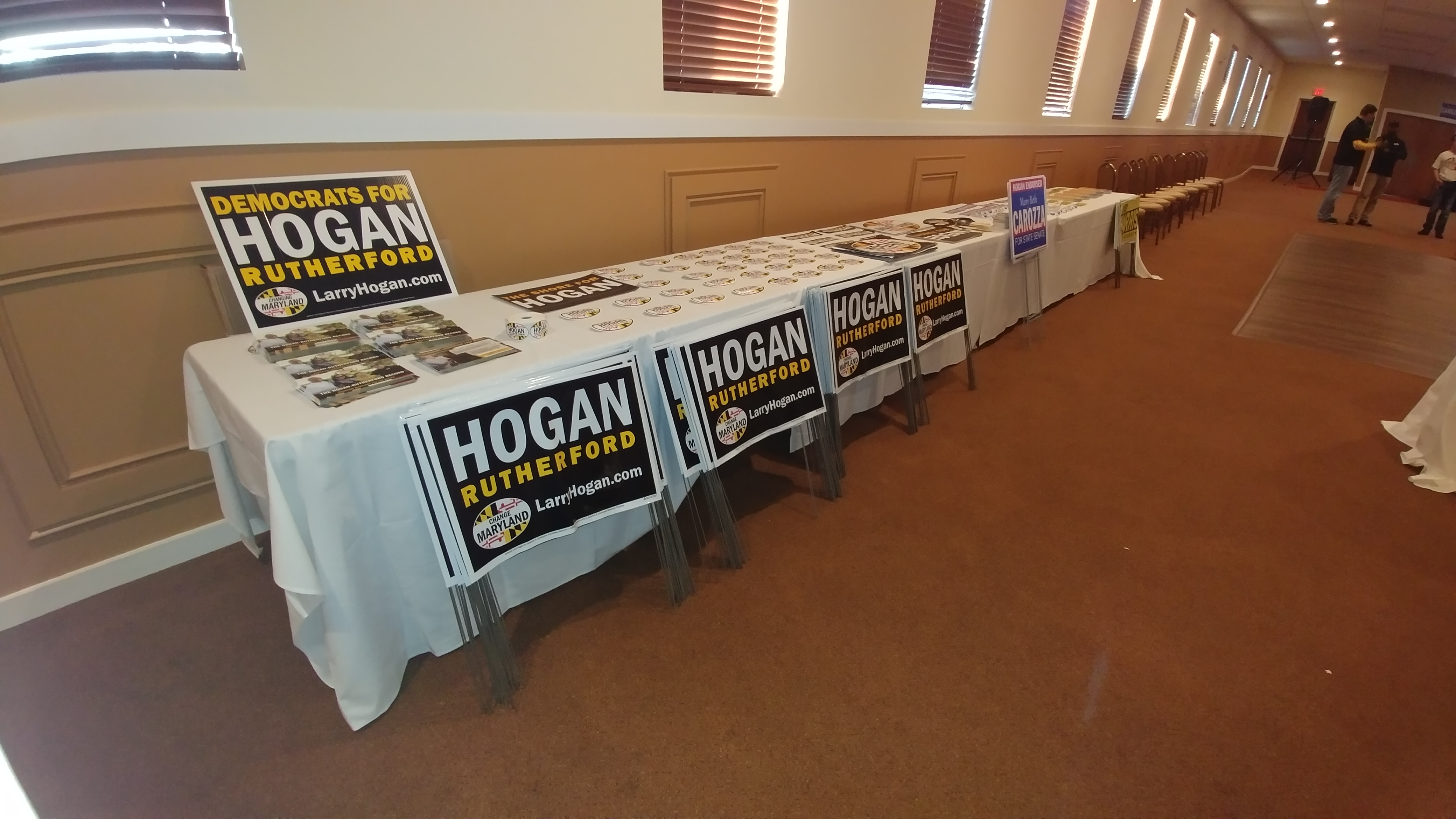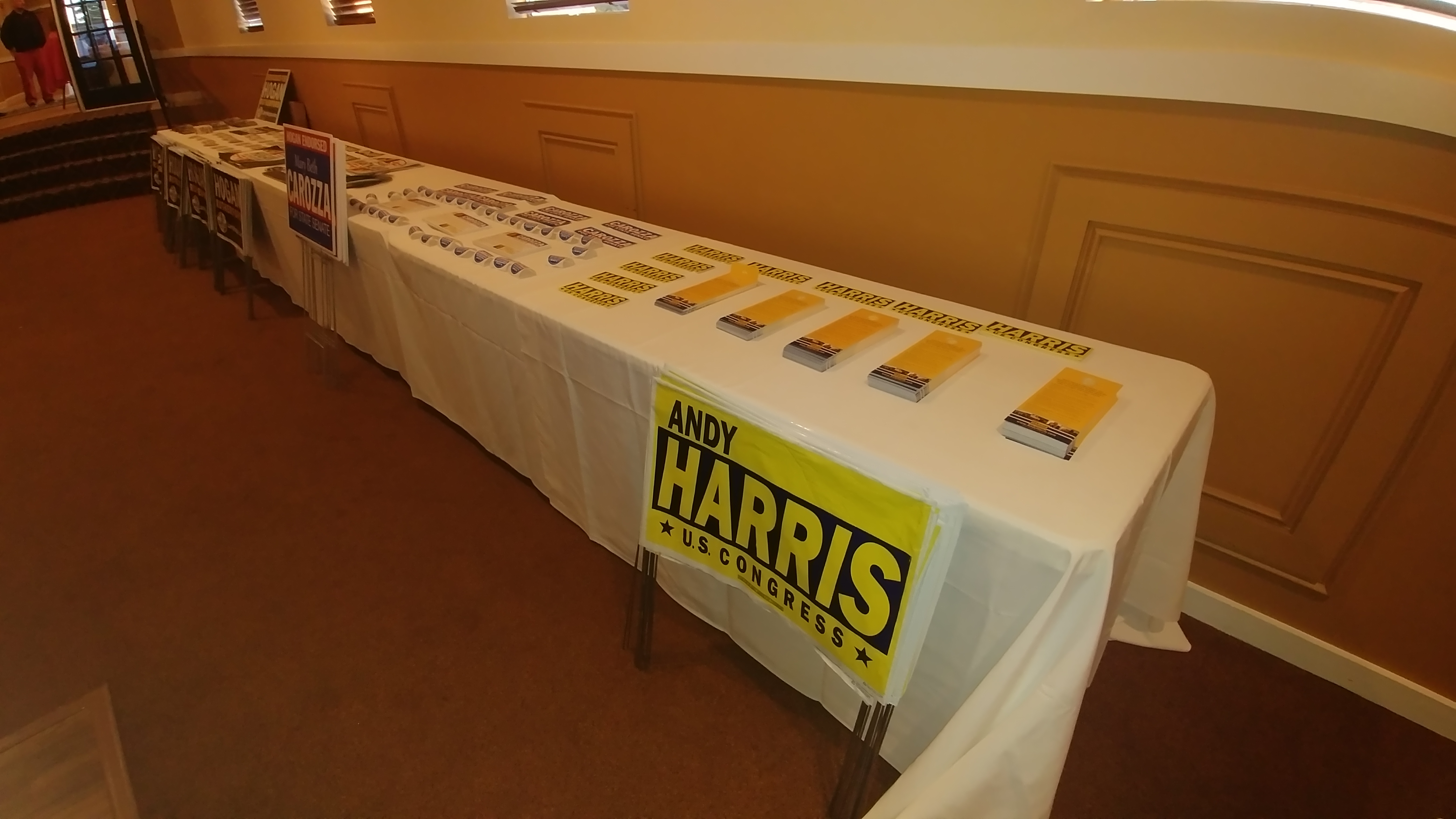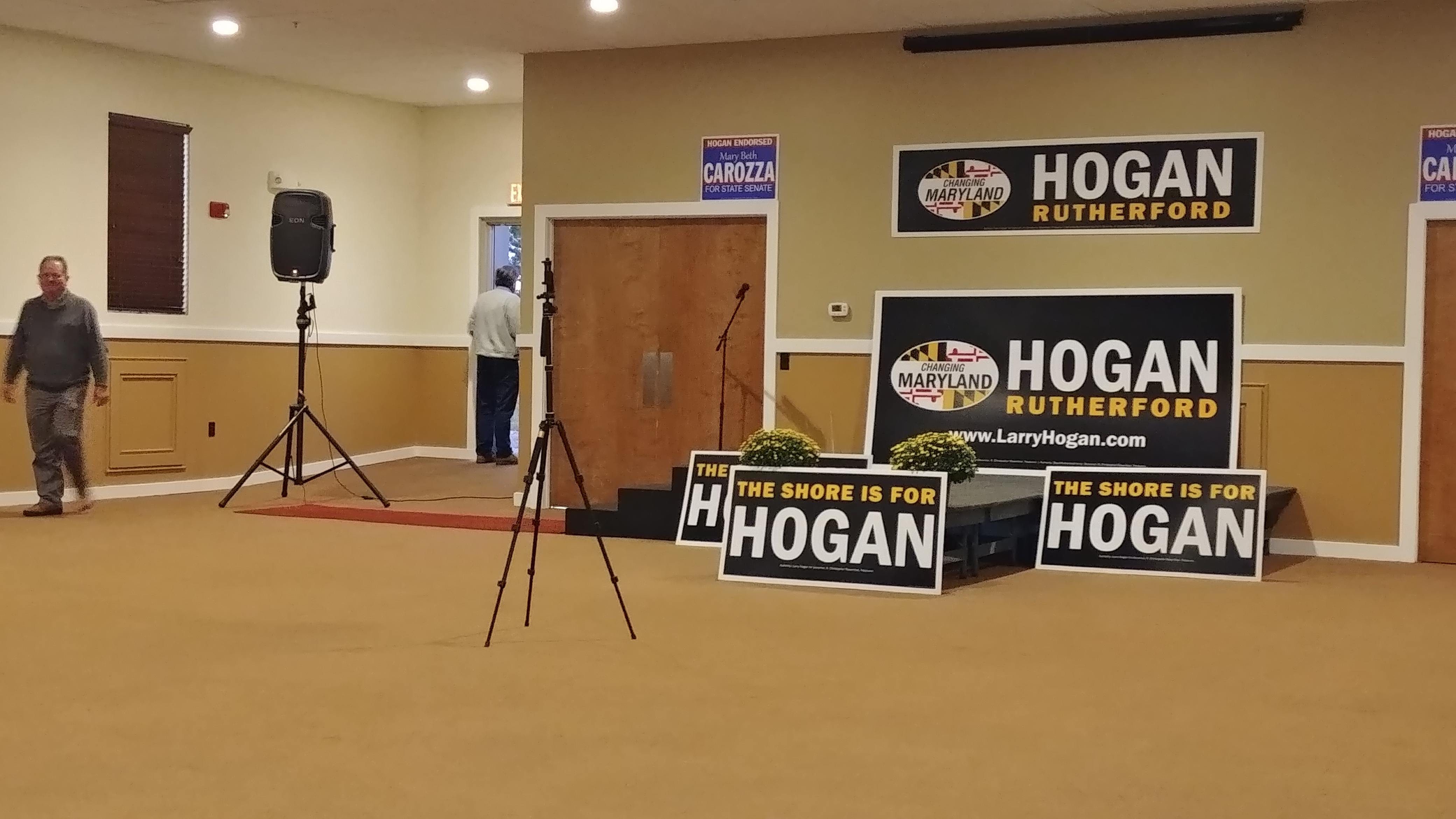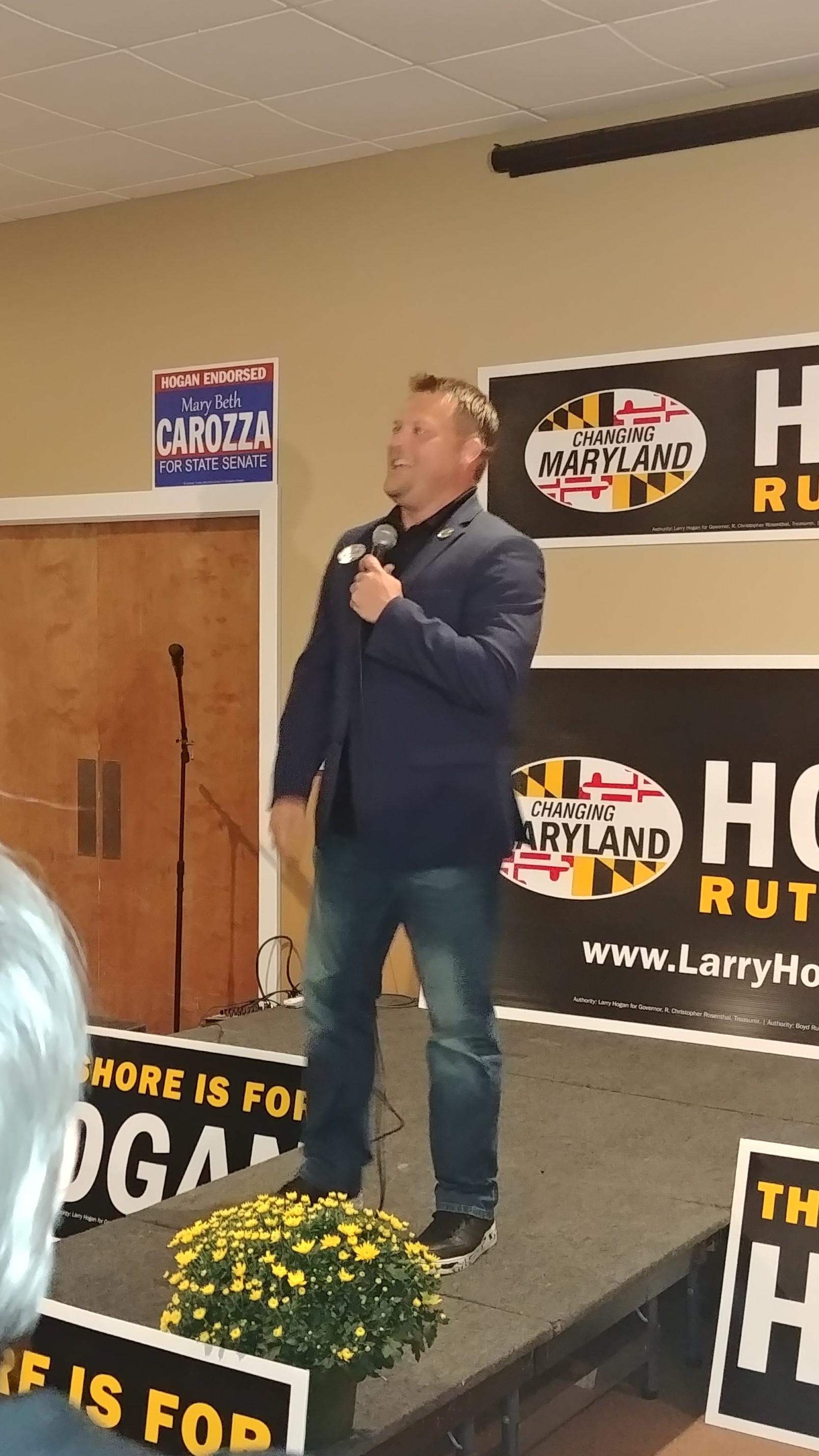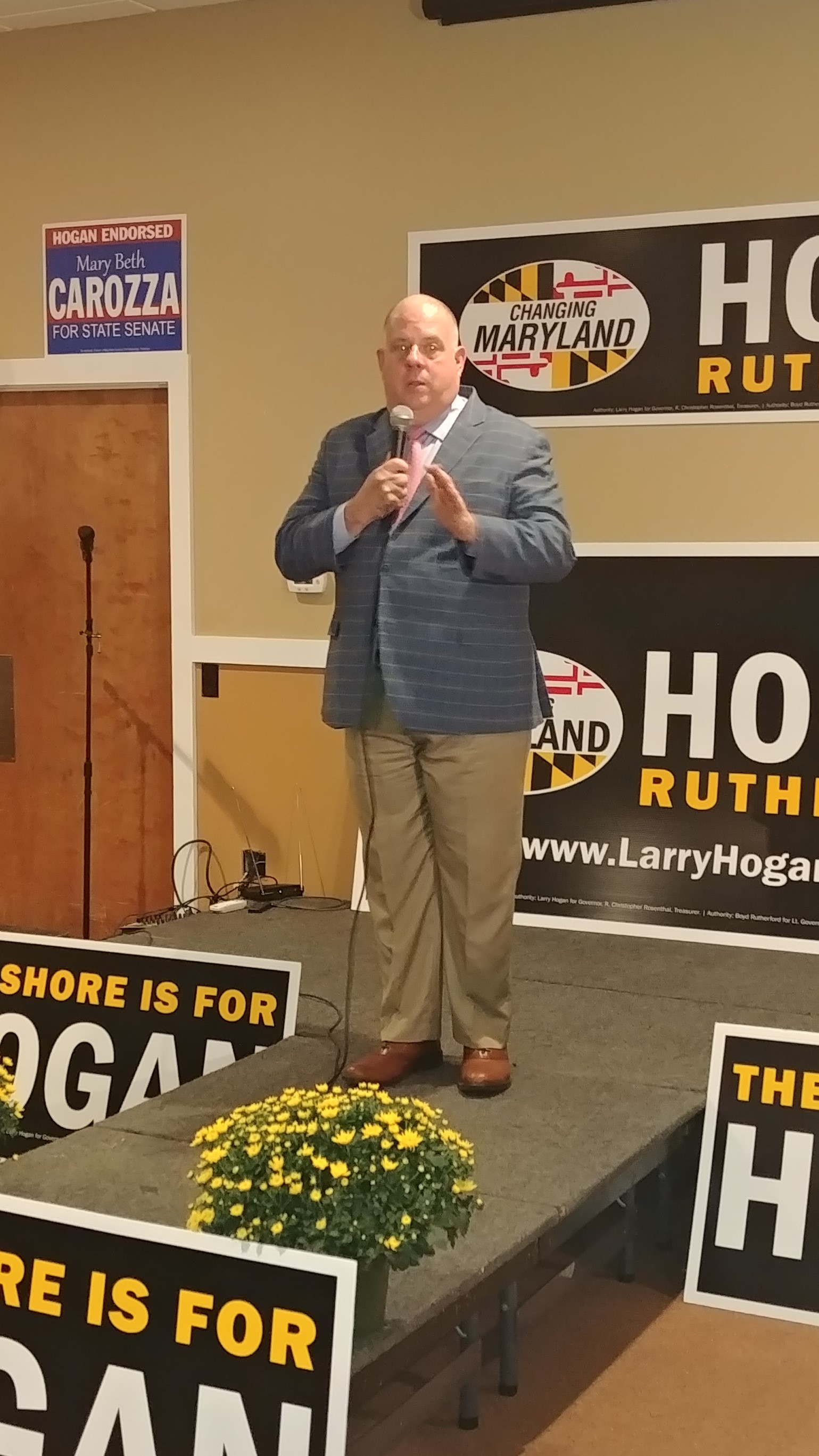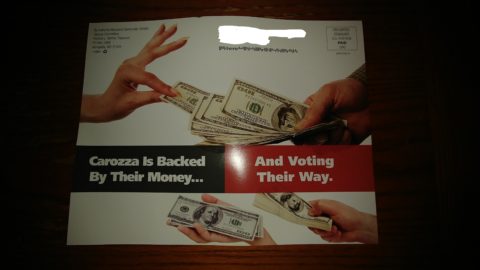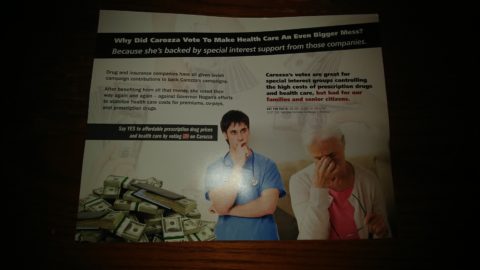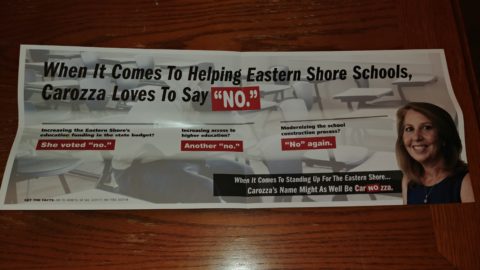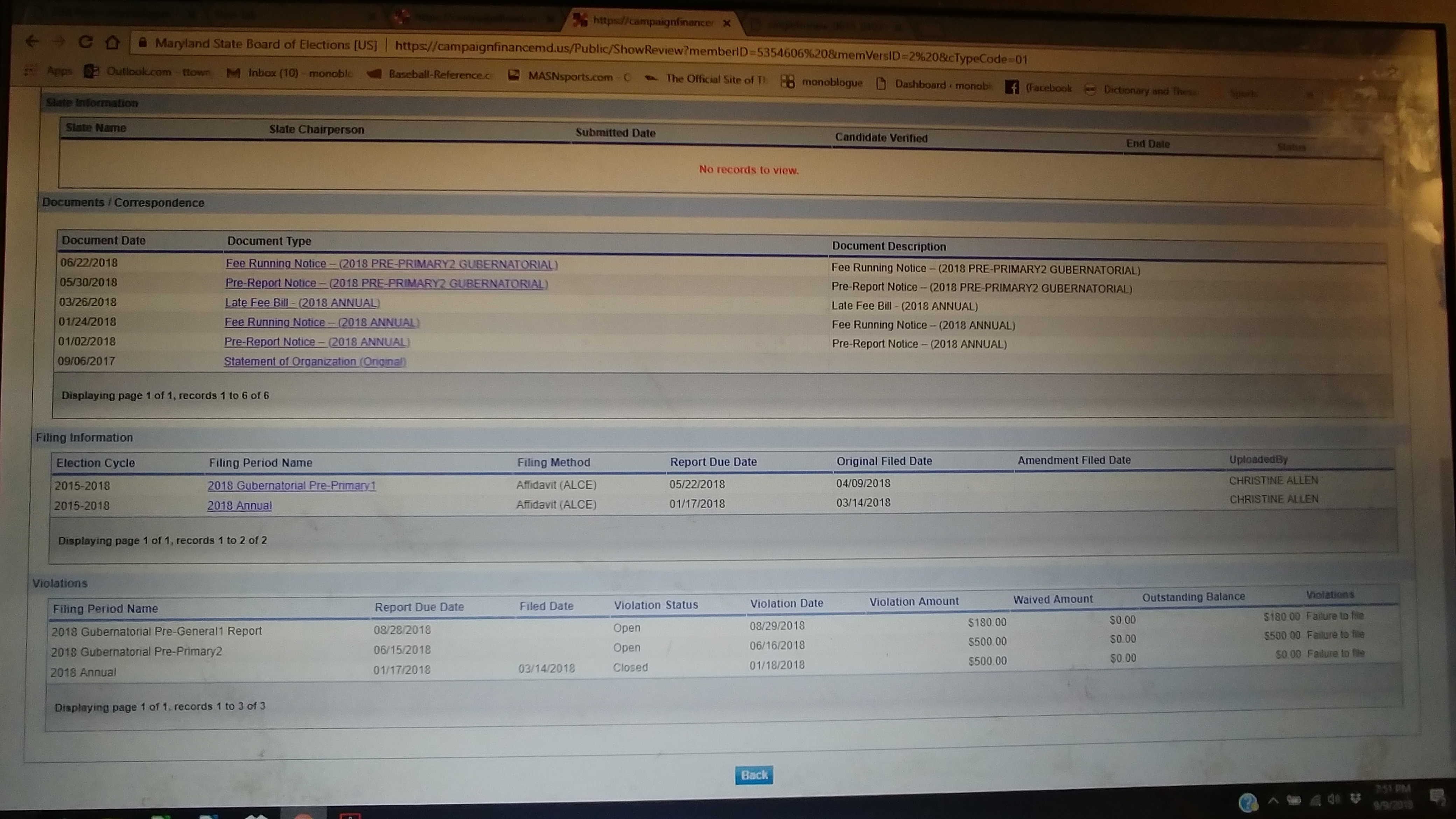Last night I took a picture of my dining room table. In this photo – with the exception of the Campbell and Wolf items that I picked up – are all the mailings and dropoffs I’ve had so far this campaign.
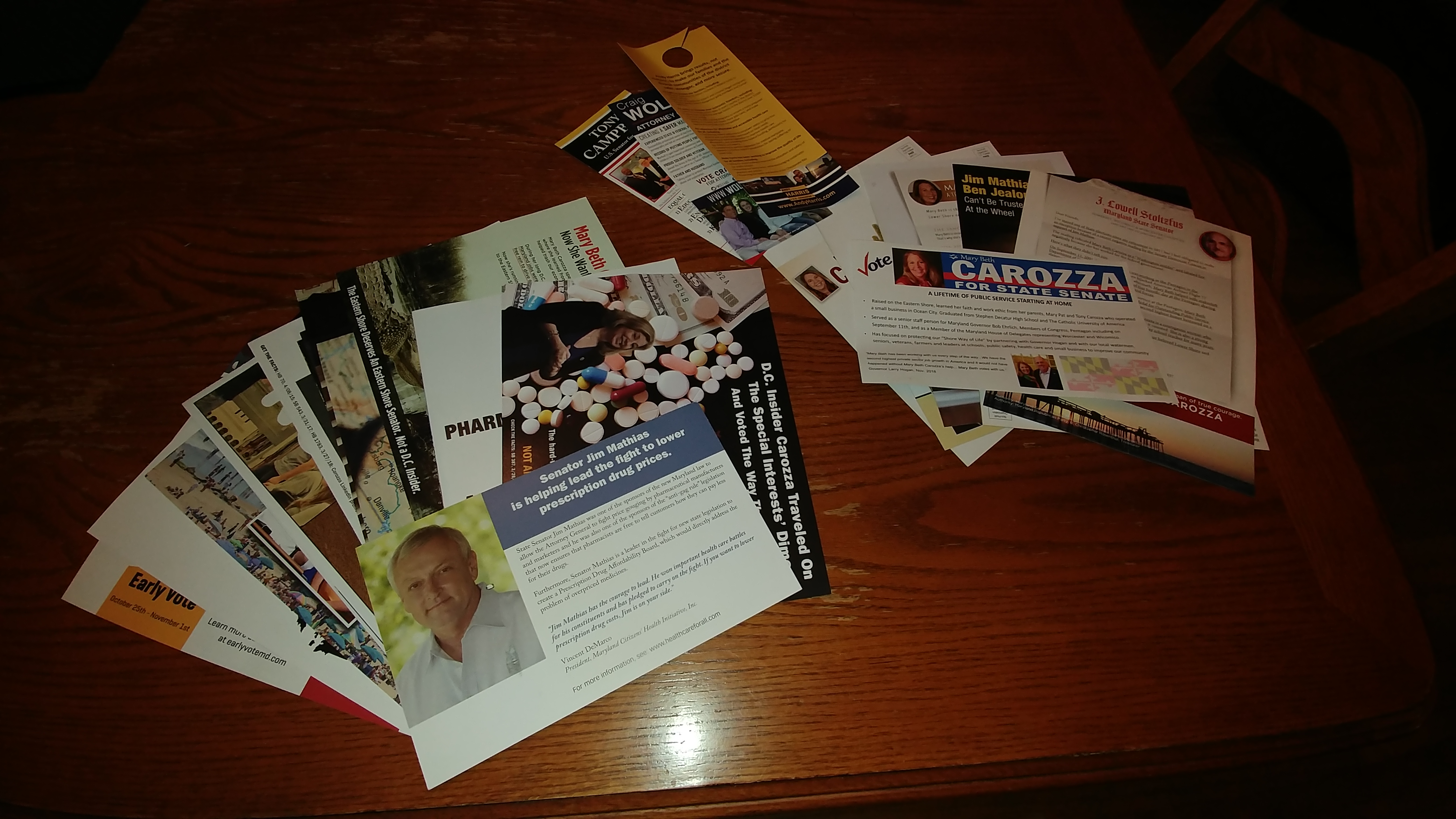
One thing I have found out is that the Maryland Democrats really care about me voting. There are 15 mailings in that left-hand stack, all but one from the Maryland Democratic Senate caucus. Twelve of them have been from the caucus on behalf of Jim Mathias, and they have followed an interesting, perhaps focus-grouped pattern.
Mailings 1 and 2, back in late September, told us how much Mathias fights for the Eastern Shore and even tries to convince readers he’s being helpful to Governor Hogan. But that soon changed: mailings 3 and 4 tried to tell us how Mary Beth Carozza (and frankly, as much as I have to type that all out, I’m going to start calling her MBC) hates education because she voted against certain bills (with good reason, in my opinion.) But number 4 also introduced a main thread that has since permeated most of the remaining mailings: MBC as Washington insider. Mailings 5 and 6 tried to tie MBC to increasing health care costs, then mailings 7 through 10 returned to the Washington insider theme, even invoking the “Swamp.” Numbers 11 and 12 go back to the insider theme, but talk about a Big Pharma-sponsored trip MBC made to Belgium – presumably as a Congressional staffer. (The citation is from a website called Legistorm, which is a subscription-based database covering Congressional staff. Hence, most of its information is behind a paywall.)
So here is the pot calling the kettle black, at least in terms of special interest money. While MBC took travel with a value described as “nearly $7,000” in mailing number 8, a look at Maryland campaign finance records shows that Mathias has easily exceeded that figure from Big Pharma over the last four years – something I noted here. I might add this was before his most recent report that pushed him into five figures.
(As an aside, that most recent report also shows Jim has spent just shy of a jaw-dropping $170,000 on TV in this brief portion of the cycle – a modest $2,500 to Comcast but the real money went in payments of $70,400 and $97,000 to a group called Screen Strategies Media – its client list includes Martin O’Malley and Planned Parenthood. Great company, huh?)
As I mentioned, there were 15 mailings on Jim’s behalf. Two of them came from the Senate Democrats with the intended purpose of boosting turnout – the first urged me to have a voting plan (I already did) and the second listed my “public voting record.” (Which, by the way, is spotless over the last four cycles.) As they warn, “Your voting record will be updated publicly after November, 2018.” Go right ahead and be my guest, folks. But for the average low-information voter that may have an unchecked space or two, nothing like a little intimidation from the “mobs” side of the ledger, eh?
The remaining pro-Mathias mailing came from a group that already “owns” him to the tune of $1,350 this cycle, the Maryland Citizens Health Initiative (MCHI). Regarding the mailing, the MCHI site republished this post from the Maryland Matters website that trumpeted their release and notes:
(MCHI president Vincent) DeMarco said the nonprofit organization spent about $40,000 on the mailings, which were reported as independent expenditures to the Maryland State Board of Elections.
Divided by three endangered Senators, that’s over $13,000 more in help for Mathias. It also puts into perspective how much the Senate Democrats are throwing into this race – figuring $40,000 for every three mailings means they are closing in on a $200,000 investment and given the amount of taxing power at stake that $200,000 is probably chump change in their eyes. All told I wouldn’t be surprised there’s over a half-million dollars spent trying to prop up Jim Mathias and save his Senate seat for the special interests.
Back to DeMarco and the MCHI. In case you were wondering where they stand, these are among the “accomplishments” DeMarco cites:
He played a key role in the enactment of Maryland’s life-saving tobacco tax increase of 2007, alcohol tax increase of 2011, and Firearm Safety Act of 2013, and anti-price gouging law for prescription drug prices of 2017 and is working to guarantee health care for all Marylanders.
It’s not session in Annapolis without seeing DeMarco lobbying for a higher tax on tobacco. Yes, MCHI is all for higher taxes, O’Malley gun restrictions, and more tax money thrown down the rathole of socialized medicine. As for the price-gouging law, it was one of those that was close to making my 2017 mAP but ended up on the cutting room floor. It was watered down to some extent going through the MGA, but if that’s your chosen featured bill you should know both Mathias and MBC favored it – they just chose to reward Jim with more campaign cash.
What MCHI is really after, though, is a bill that would force pharmaceutical companies to justify price increases deemed too steep. It may sound good, but taken from their business standpoint it would place a lot of their trade secrets at risk. MCHI’s justification for a previous version of their bill conceded that, “While the bill does not directly decrease the price of drugs, it is a first step on the path to lower, fair, and justifiable drug pricing.” No, it’s a first step to further clearing the market of small, innovative companies that may need to increase prices to cover development costs. Perhaps that’s why Big Pharma likes Jim so much – they just don’t seem to have the juice for MBC anymore. Maybe she wasn’t useful to them?
It should be noted that the Maryland Republican Party has done the heavy lifting to back MBC, and while they are (rightly) critical of Jim’s tax-and-spend voting record, they are really trying to pin a particular bill sponsorship on him – the infamous “Overdose and Infectious Disease Prevention Supervised Drug Consumption Facility Program” known as Senate Bill 288. Jim must have known it was bad news because he was for it before he was against it. This bill, though, was an extension of a 2016 needle exchange bill (SB97) that Mathias voted for and MBC opposed. Even earlier, Mathias voted for a measure eliminating a “one for one” restriction on a long-standing Baltimore City needle exchange program.
Moreso than the record, though, the MDGOP is using the endorsements of three noted individuals and a photo Mathias probably wishes he never stood for. Then again, Jim’s voting record would make Ben Jealous proud.
The MDGOP keeps touting the Hogan endorsement of MBC, but has more recently sent out letters of recommendation from First District Congressman Andy Harris, who called MBC “an authentic, dependable leader who shares our values and will do what’s best for our community,” and Mathias’s predecessor, former Senator Lowell Stoltzfus from Somerset County. Wrote Stoltzfus in part:
I’ve stayed out of State elections since my retirement in 2011 but I feel obligated to make an exception because of a recent negative mailing by the Senate Democrat Caucus in support of Jim Mathias.
The mailing ridiculed Mary Beth Carozza as a “Washington insider” and labeled her negatively because she has worked for the federal government.
Here’s what they didn’t tell you.
Stoltzfus goes on to relate that MBC was on the job at the Pentagon on 9/11, and conducted herself in such an exemplary manner after American Airlines Flight 77 crashed into the building that she received the Secretary of Defense’s Medal for Outstanding Public Service.
Out of the five mailers I’ve received on MBC’s behalf, 2 1/2 were positive toward her and 2 1/2 negative toward Jim Mathias – well, more specifically, his voting record and/or tying him to locally unpopular Democrats like Ben Jealous or Martin O’Malley.
That’s a stark contrast to the Mathias side having 10 out of 12 mailers be negative toward his opponent, with only a few referring to specific votes. They’re obviously hoping voters fail to understand there’s a bit of a difference between being a Congressional staffer and an Executive branch appointee, the latter of which is much of what comprises the Swamp. MBC did a little of both, but more of the time was spent working in Congress and not being a holdover of the previous administration causing headaches for the new boss.
To be so negative at this late juncture most likely means the incumbent (or, to be more candid, his special-interest backers) are worried. They have only one more recourse, and it’s going to be interesting to see if they fire that last bullet in the chamber before it’s all said and done. I know one thing, if nothing else: Annapolis Democrats are all about maintaining power by whatever means necessary, principles be damned. So I won’t be surprised if there’s one more special mailing from the Mike Miller swamp in Annapolis.



